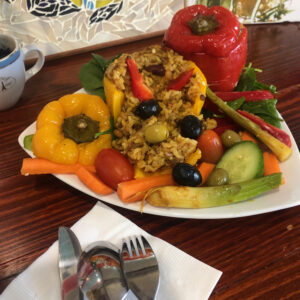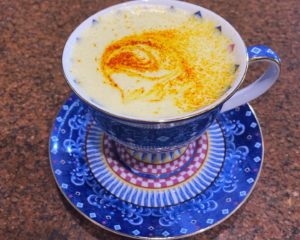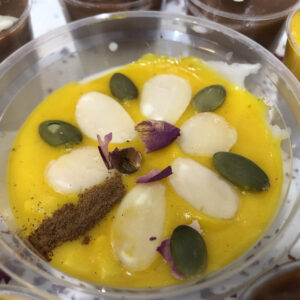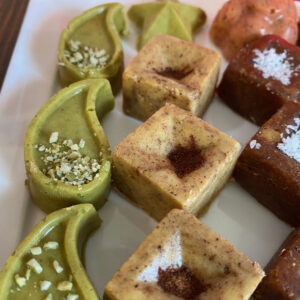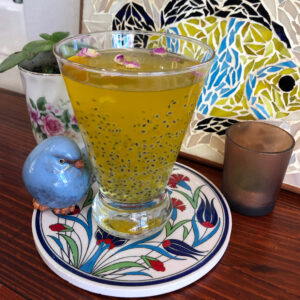7 Health Benefits of Saffron: The Priceless Spice
SAFFRON BENEFITS
Healing Benefits of Saffron
The valuable culinary properties and medicinal benefits of saffron have contributed to its status as a highly prized spice worldwide. Contemporary research has indicated that saffron can serve as an aphrodisiac, diaphoretic (inducing sweating), carminative (relieving gas), and may even stimulate menstruation. Further benefits of saffron are outlined below:The valuable culinary properties and medicinal benefits of saffron have contributed to its status as a highly prized spice worldwide. Contemporary research has indicated that saffron can serve as an aphrodisiac, diaphoretic (inducing sweating), carminative (relieving gas), and may even stimulate menstruation. Further benefits of saffron are outlined below:
1. Protects against cancer:
Saffron contains a dark orange, water soluble carotene called crocin, which is responsible for much of saffron’s golden colour. Crocin has been found to trigger apoptosis [ programmed cell death] in a number of different types of human cancer cells, leukemia, ovarian carcinoma, colon adenocarcinoma, and soft tissue sarcoma. Researchers in Mexico who have been studying saffron extract have discovered that saffron and its active components display an ability to inhibit human malignant cells. Not only does the spice inhibit cells that have become cancerous.
2. Promotes learning and memory retention:
Recent studies have also demonstrated that saffron extract, specifically its crocin, is useful in the treatment of age related mental impairment. In Japan, saffron is encapsulated and used in the treatment of Parkinson’s disease, memory loss and inflammation.
3. In delayed puberty:
In under developed girls, saffron has an overall stimulant effect. A pinch of saffron crushed in a table spoon of milk is useful to stimulate hormones and bring about desired effect.
4. To increase vitality:
In low libido saffron aids as a sexual stimulant and can be consumed in a dose of a pinch in a glass of milk at bed time.
5. In patchy baldness:
Saffron mixed in liquorice and milk makes an effective topical application to induce hair growth in alopecia.
6. Protection against cold:
Saffron is a stimulant tonic and very effective to treat coldand fever; saffron mixed in milk and applied over the forehead quickly relieves cold.
7. Food Additives:
Saffron is an excellent replacement for synthetic food additives- for eg: instead of FD and C yellow no 5: a synthetic food coloring agent that is a very common allergy trigger, Saffron’s glorious yellow could be an acceptable hypoallergenic choice.
Using Saffron for Non-Culinary Purposes
It is important to conduct thorough research prior to utilizing saffron for non-culinary purposes, such as medicinal or cosmetic applications. While saffron is commonly used in cooking and baking, it is also known for its potential therapeutic and aesthetic properties. Nonetheless, it is crucial to investigate the effects of saffron comprehensively before using it for purposes beyond cooking.
Below are some facts to keep in mind:
How to serve Saffron in daily life
With these benefits known to us, this culinary treasure has to be used and especially in the winter months. Here are some serving ideas:
1. For a wonderful marinade for fish, add saffron threads, garlic and thyme to vinegar.
2. Use saffron to give cakes, pastries and cookies a buttery golden hue and a rich aroma.
3. Cook biryanis with saffron combined with cloves, cinnamon, Indian bay leaves and nutmeg for a memorable treat.
4. Crush a tiny piece of saffron into a glass of champagne or sparkling apple cider and turn the drink into a golden elixir.
5. Coffee spiced with saffron and cardamom is a soothing and heart healthy drink.
6. Add saffron and cinnamon to whole milk or yogurt and honey for a simple version of the famous Indian yogurt drink, lassi.
Saffron as a spice, is generally regarded as safe, however it is not recommended during pregnancy and nursing. It also must also be pointed that large doses i.e. more than 1 or 2 table spoons can be toxic, although saffron poisoning is very rare.
More Saffron Tips
Get what you pay for. Obtaining high-quality saffron is a worthwhile investment, albeit an expensive one. The process of harvesting saffron is labor-intensive, which contributes to its elevated price point. It is important to keep in mind that the adage “you get what you pay for” applies to saffron, and investing in a higher quality product is likely to yield a more satisfactory outcome.
Know what flavor to expect. Saffron has a pungent, musty taste and scent with sweet floral accents. When used in excess, however, the taste can quickly become bitter.
Opt for whole saffron instead of ground. Simply put, whole saffron has a stronger flavor than ground saffron. Ground saffron can be a good substitute if you cannot find or afford the whole spice, though.
Crush and soak the threads. The process of crushing and soaking saffron releases the maximum amount of flavor from the threads, so it’s strongly recommended.
Use saffron in grain-based recipes. Most traditional recipes calling for saffron are grain-based, including risotto, pilaf, and paella.
Add saffron to desserts. Since saffron has a flavor profile similar to vanilla, it works well in many desserts that typically feature vanilla as the primary flavor.[6] This includes custard, plain pastry, and sweet breads.
Store the saffron carefully. Saffron doesn’t spoil, but it will gradually lose its flavor in storage. Proper storage can preserve the saffron for longer periods, however.
Toast the threads. Toasting is another common way to prepare saffron, and it’s especially common for traditional paella recipes.
Crumble and add directly. While not ideal, you can crumble and add the threads of saffron directly to the dish while you cook it if the recipe calls for a large amount of liquid.
Combine saffron with other flavors as desired. If you want saffron to serve as the primary flavor in a dish, you’ll need to avoid adding other spices, herbs, or aromatics. When mixed with other spices, however, saffron can give dishes an overall deeper flavor.

